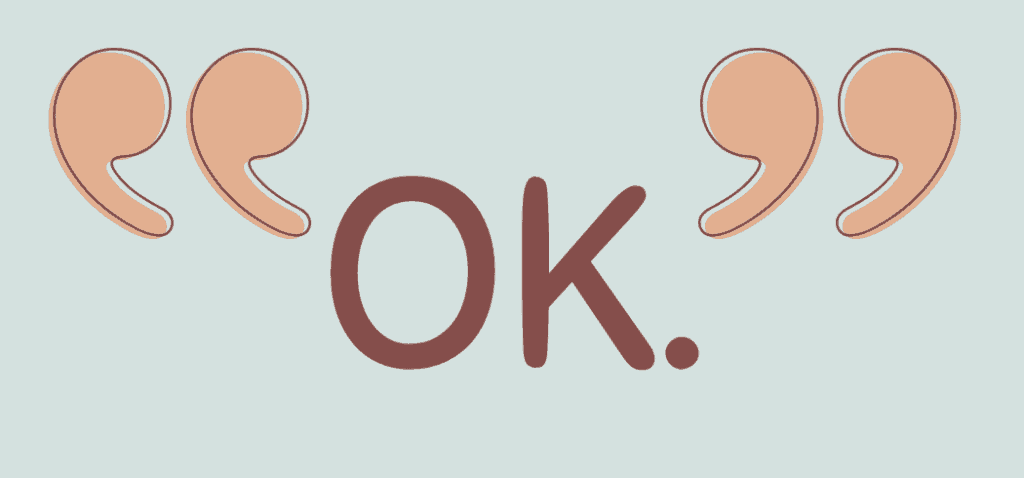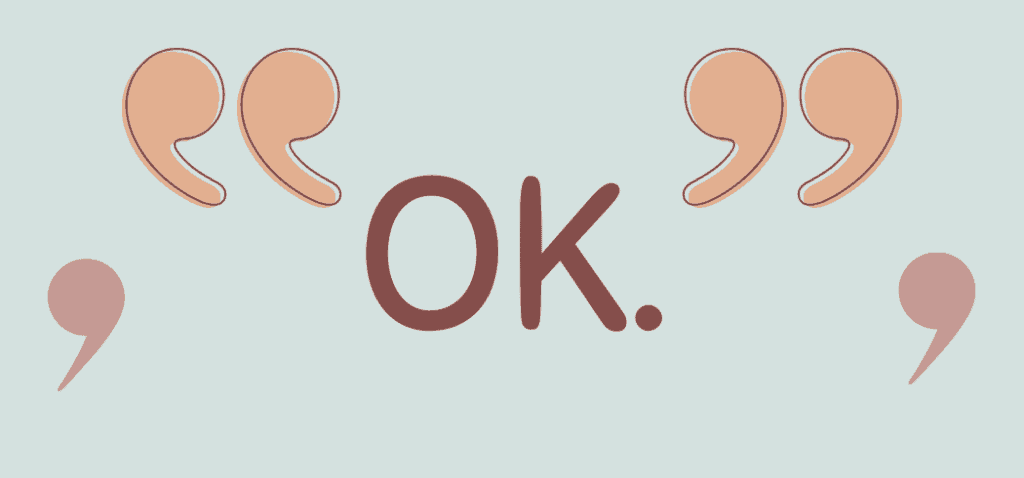Punctuating quotations raises many questions, and when instructing a class on proper comma placement, I am often met with blank stares unless I first break down the elements involved: 1) rules of quotation and 2) rules of commas.
Once students have reviewed both uses, they can more easily combine them into a properly punctuated, understandable piece of text. Let’s review both quotation mark use and commas to fully understand where to place commas both before and after a quote.
Quotation Marks Explained

Quotation marks are a type of punctuation mark that are used to begin and close direct quotes and indicate dialog in written text. In American English, they are a double mark (“and “), making them easy to recognize while reading.
The use of quotes provides interest and support to an argument through the use of others’ words within your writing. Direct quotes require quotation marks, while indirect quotes do not.
Dialog is enclosed within quotation marks to indicate a character’s speech or thought, and if incorrectly punctuated, it may cause confusion.
Direct Quotes
Quotations are used with direct quotes to represent a person’s exact words, thoughts, and speech. They are usually introduced with the double quotation mark as part of an interruption or as a phrase within another complete sentence.
Indirect Quotes
Indirect quotes do not require quotation marks. They are usually presented as a paraphrase or summary of another person’s words, thoughts, or speech.
Anytime you use material that is not yours, you should always provide a citation to give credit to the author’s words.
Does a Comma Belong Before or After Quotation Marks?

When using direct quotes, you must properly punctuate them in accordance with where you have placed them in your own written text. Placement of the comma is often particularly confusing since you might wonder if the comma goes before the quotation mark, after the quotation mark, inside the quotation mark, or on the outside.
If you can keep the following four rules in mind, then you’ll understand why a comma is always placed before quotation marks, and you will always place the comma in the correct position.
Comma Rule #1: A comma belongs before the quotation marks when placed after an introductory expression.
An introductory expression is a phrase or clause that acts as a qualifying or clarifying statement about the rest of the sentence. This expression is followed by a comma which is placed before the beginning quotation mark.
For example:
- The instructor made the directions about the exam time very clear when he stated, “the exam begins at three o’clock on the dot, and at five after three, the doors will be shut and locked.” He also suggested we be there 15 minutes early.
Comma Rule #2: A comma belongs before closing quotation marks if followed by a concluding statement.
When your quote is followed by a concluding statement of any sort, you place the comma after the quote but before the closing quotation mark. This helps create a break between the quote and the narrative that follows.
For example:
- “I was wondering if there was any way you might reconsider,” my boss stated; it wasn’t a question he was asking, and I was a bit taken aback at the presumption.
Comma Rule #3: When an expression interrupts a quote, place a comma before closing quotation marks and before the beginning quotation marks of the conclusion quote.
Rule #3 is a combination of rule #1 and rule #2. Remember that a comma follows a quote and is placed before the end quotation marks whenever text follows, and a comma goes before the next set of opening quotation marks.
For example:
- “I’m not a fan of the extended say learning opportunities,” was the reply, “I prefer to let my students act like kids at the end of the day.”
Comma Rule #4: In dialogue, comma placement is dictated by speaker attribution and is placed before quotation marks.
Most written dialogue is attributed to a speaker using what is called a dialogue tag. These tags allow the reader to know who is saying what – an important detail when back-and-forth dialogue is in use.
Dialog tags provide credit to the speaker and follow the same rules of comma placement as the rules explained above.
When the dialogue tag is before the dialogue, the comma is placed before the first quotation mark.
For example:
- He looked her up and down, exclaiming, “You’re crazy if you think I’m driving that far.”
When the dialogue tag comes after the dialogue, you place the comma after the quotes, but before the quotation marks
For example:
- “I’ll be back before dinner,” Harriet yelled up the stairs to her mother.
When the dialogue tag is used to interrupt dialog, the comma is placed before the closing quotation marks and before the start of the opening quotation marks.
For example:
- “I don’t understand this assignment,” Jerri rolled her eyes in frustration at the substitute, “and I don’t understand why we have to do it when the teacher isn’t here to explain it to us.”
There are also questions about where the comma goes when dialogue ends with a quote within a quote. You can review our article about this here.
Let’s Review
Commas always come before a quotation mark when you are directly quoting another person’s speech, text, or thoughts. They also always come before quotation marks when using them to indicate dialogue in a written text.
